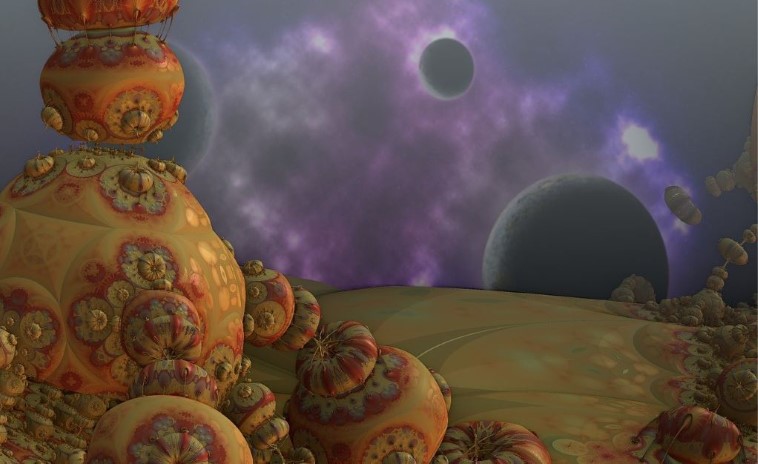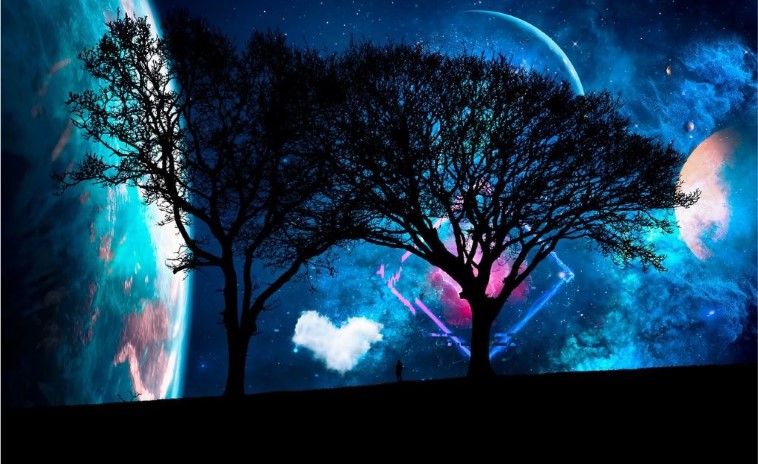The appearance of life on our planet

More than four billion years ago, the Earth was formed in a swirl of gas and dust. It was a chaotic age as many newly created bodies raced around the Sun, colliding, breaking apart and merging with each other.
The Earth was heavily bombed at that time, but one impact was particularly dramatic. A huge body, the size of half of our planet, hit the Earth with such force that its crust instantly heated up and melted.
Then the volcanoes started working. They spewed out huge amounts of ash thick sooty clouds of gases. The early atmosphere of the Earth was created from those gases including carbon, sulphur, ammonia, and many others – all released from volcanoes.
Then the rain began, violent and incessant. The first seas were created due to this.
It took 100 million years for the situation to calm down and for the Earth’s crust to solidify. But the ambiance was still terrible for our notion of a pleasant environment.
And then, it was 3.8 billion years ago, in such horror, a miracle of galactic proportions happened. Life appeared!
In 1953, in his famous experiment, the American chemist Stanley Miller tried to imitate these conditions from the dawn of life. He put water which was supposed to represent the first seas and all those gases of the early atmosphere into sealed containers, and then he ran a high-voltage current through it all for days.

Electricity played the role of lightning and thunder from ancient times. After a week of frying and boiling, among other things, some organic compounds and a few amino acids were found at the bottom of the container.
Later, similar experiments with the Earth’s early atmosphere, while more faithfully imitating other conditions that prevailed nearly four billion years ago, were repeated many times and always produced similar things, organic compounds as well as amino acids.
The creation of life
Amino acids are important compounds. They are at the very base of life, and if you want to create life, you have to make amino acids. However, that is the easy part. It is unimaginably more difficult to organize amino acids into proteins.
As far as we know, there are several hundred types of amino acids on Earth, but to make one protein you will only need 20, with the fact that for an average protein you need a total of several hundred amino acid molecules.
You must connect the amino acids in a certain order. There is only one combination that will work, while all the others are wrong.
And there are more of those wrong ones than there are atoms in the universe, and that’s why it’s so hard to do. At this stage of scientific development, it is a hopelessly complicated task.

Only nature could do that, and it still needed many millions of years for that feat.
But even if you made a protein, you would still be at the very beginning and facing the next, much bigger challenges. Because things in life are much more complicated.
Proteins are only a fraction of the inventory of the basic unit of life, the cell. Even the simplest cell, say a yeast cell, consists of as many parts as you need for a Boeing 777!
And at a higher level of life, things only get more complicated.
Let’s say, for your own existence it is necessary to create at least 200,000 different types of proteins.
The first cell
How was the first cell formed?
That enigmatic question is one of the most important that stands before us.
Funnily enough, we have no precise answer at all. It is usually said that at that time 3.8 billion years ago, when there was already water on this planet, and the atmosphere was filled with suffocating gases and wildly fried by lightning, chemical elements simmered for millions of years, and that over time a semi-permeable membrane was created about some scrap, etc. again for millions of years, until that wobbly little quiver decided to split into two parts and passed that feature of division on to its descendants.
Scientists, of course, are not satisfied with this explanation. From a scientific point of view, it can hardly be a starting hypothesis. But there are no answers to the questions of how and why all this happened, and the appearance of life is still a great mystery.
All the chemical elements of life are known, the laws governing the world of molecules are known, etc. but how it came to be that multitude of atoms that stuck together and formed a life is still not fully known.
Life from space
There is one theory that, if true, still explains the appearance of life on our planet. It is known under the name of panspermia and is mostly associated with the British astrophysicist Fred Hoyle.
In 1871, at a meeting of the British Society for the Advancement of Science, the famous Lord Kelvin mentioned the possibility that life had arrived on Earth from outer space, with some meteorite.
It was a bold thought that only an astute mind could create, but it quickly fell into oblivion. However, in recent times some dramatic events have imposed it again.

In 1969, a meteorite exploded over Murchison, a small town north of Melbourne, Australia, and a shower of stones fell to the ground. No one was injured, and several tens of kilograms of those space rocks were sent to laboratories. Analyzes have shown that the meteorite is 4.5 billion years old and is rich in amino acids.
There were other similar cases later and today we know that amino acids are not rare in the universe. Thus, the idea of panspermia gained importance and the theory according to which life on Earth was seeded from space became popular.
However, it does not answer how life originated, but only how it originated here.
Later, it expanded even beyond the limit of scientific tolerance which includes, for example, the claim that the germs of life were spilled on Earth by aliens, but it basically remained equal to other scientific assumptions. Have you heard of any other theories?

